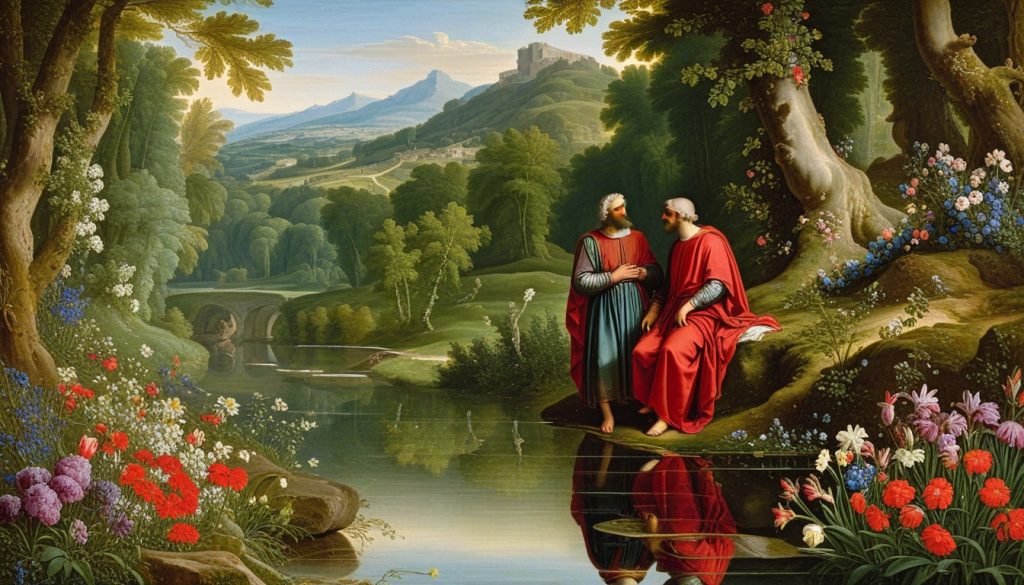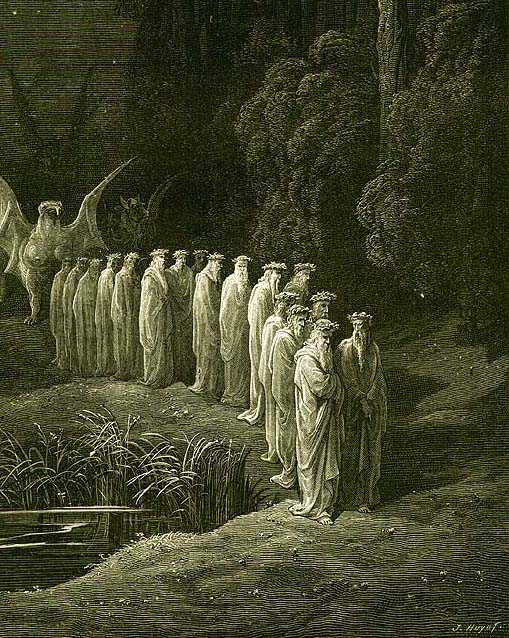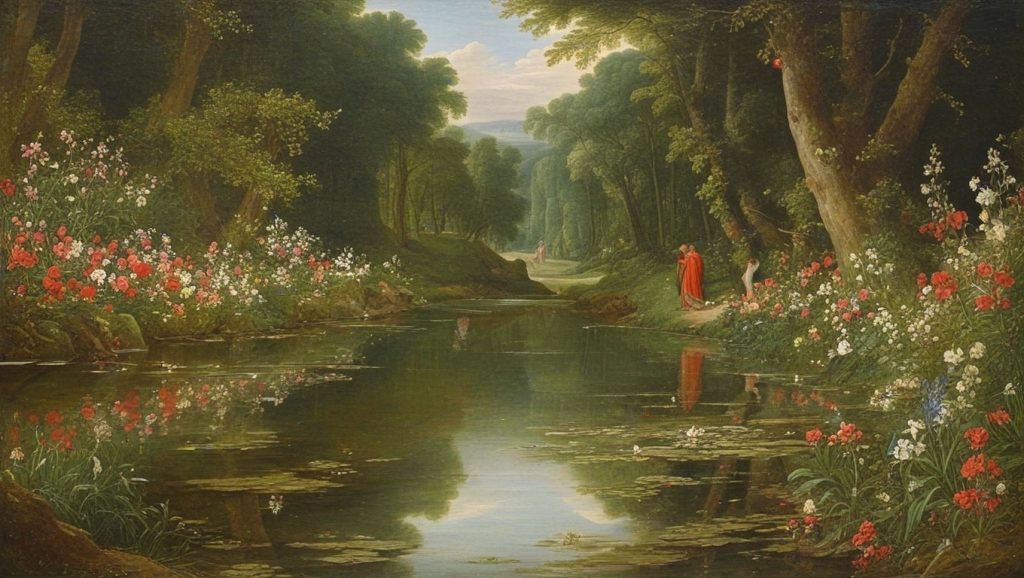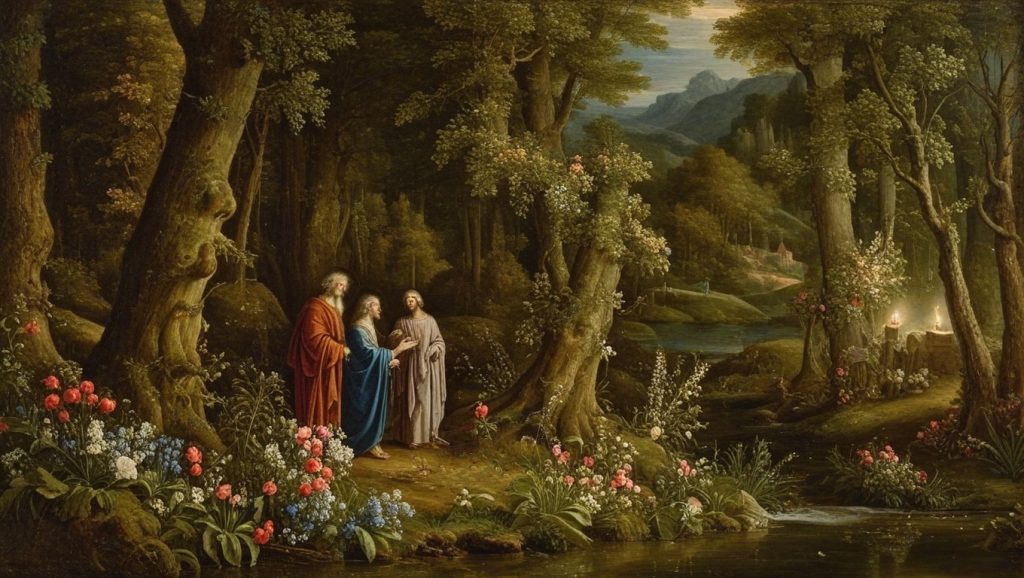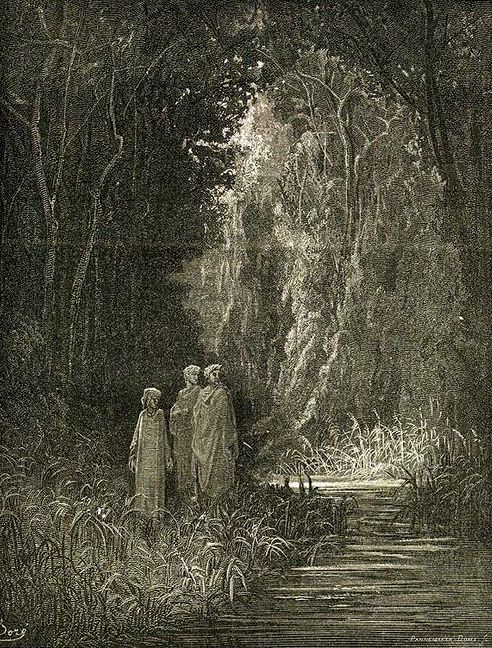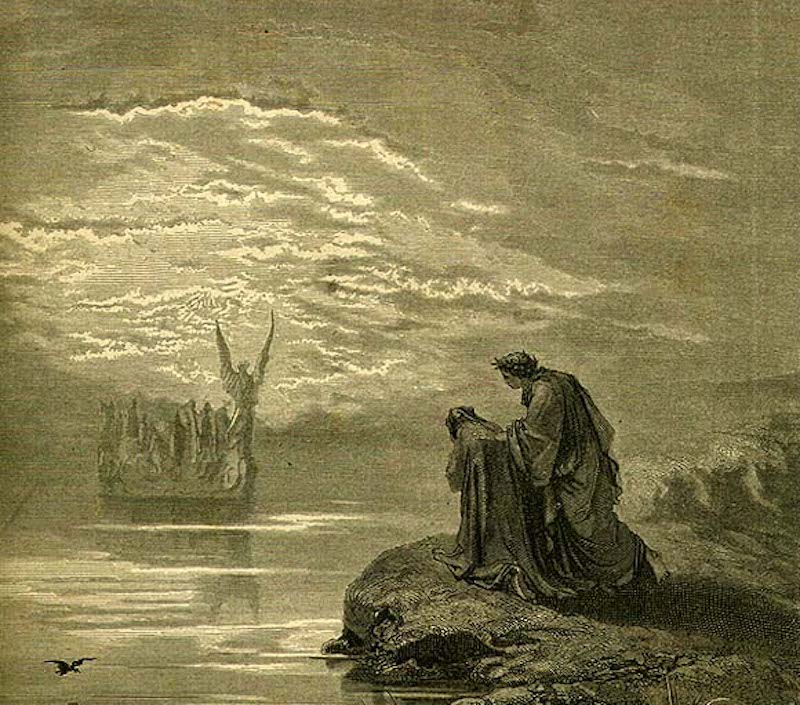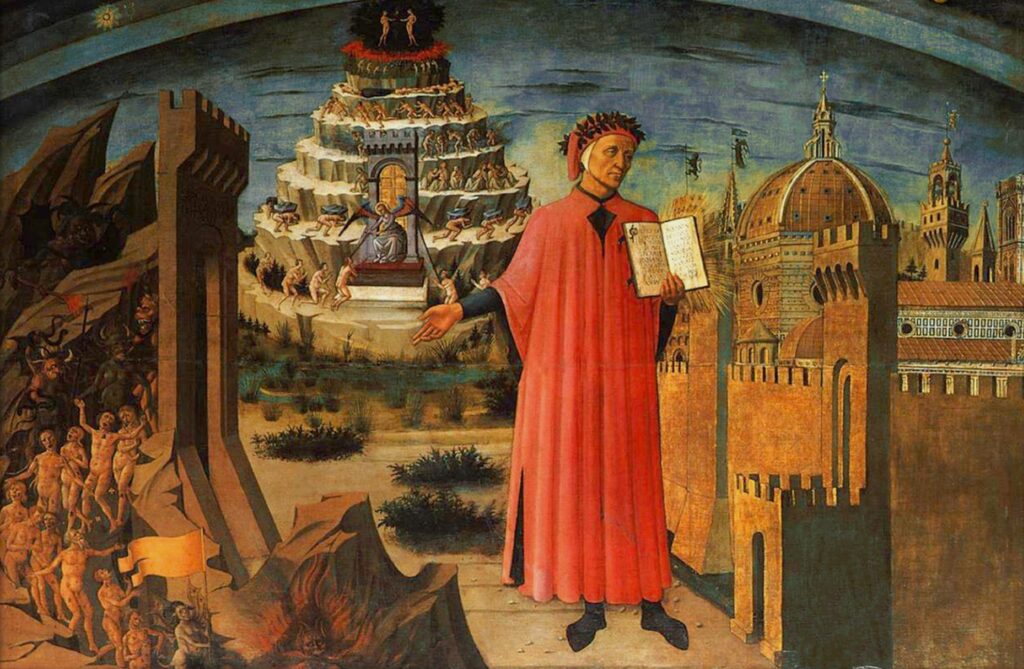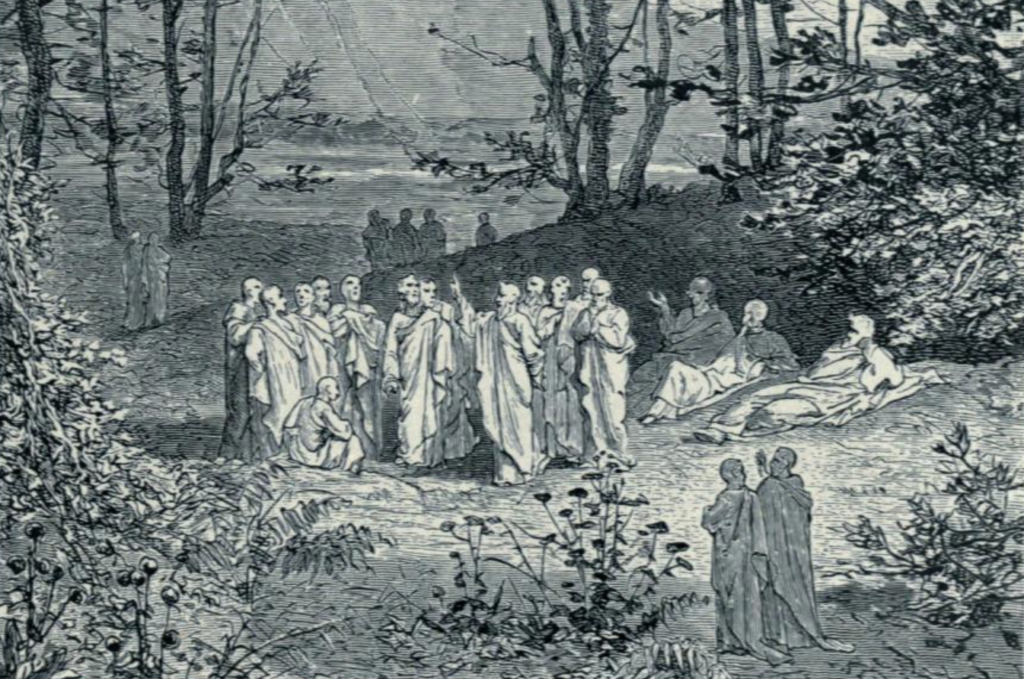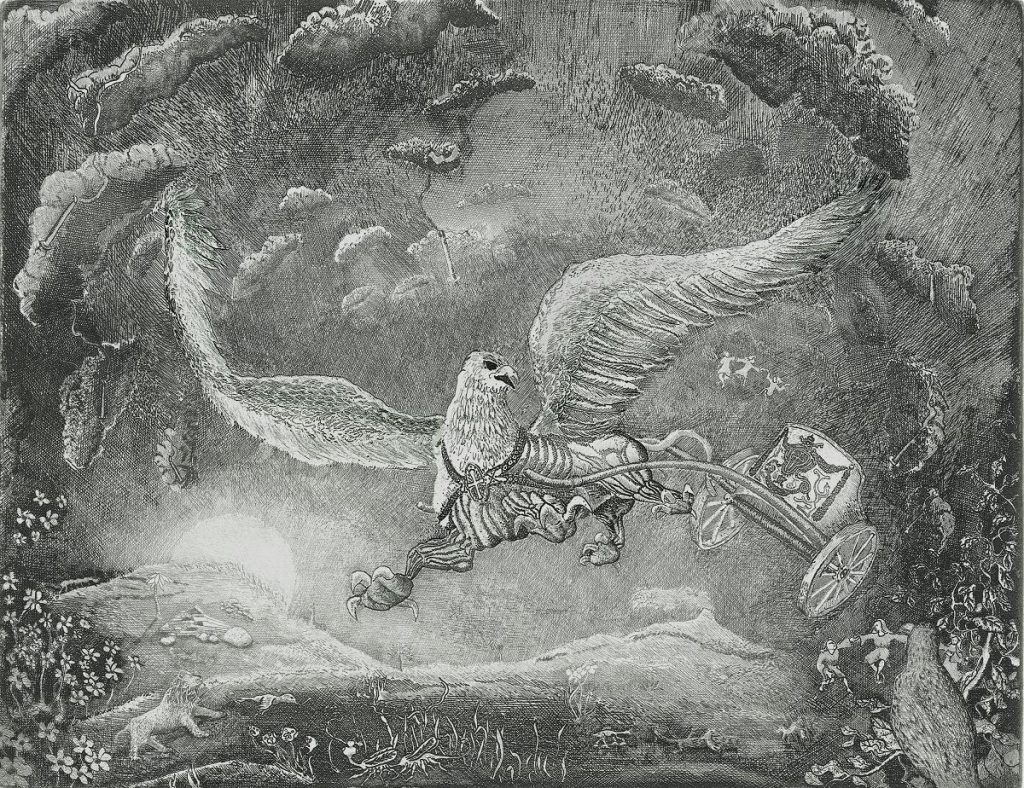
After the four gospels have appeared on the other side of the river, as a deepening vision and experience of spiritual wisdom – the Pilgrim sees something more: in the “midst of” or “inside” the four gospels there is a chariot on two wheels, pulled by a griffin.
This image is extraordinarily deep and complex. First, the chariot is a central metaphor for not only the whole Comedy, but for Dante’s larger cosmology and ontology, as well as his theology in some sense. More and more comes the idea, that reality at the deepest level is a churning unity of two asymmetrical dimensions. This is a source of being and the deepest principle of the emergence of reality. And this insight/vision comes precisely in the space inside/between the four gospels. Meaning: if one digs deep enough into the spiritual wisdom and living reality, one will eventually encounter this principle. It applies to all the deeper dynamics: your soul and God, matter and spirit, love and wisdom, stability and motion. Two dimensions of different natures, unified together, with often infinite emergence.
This “carro”/chariot will increasingly become a guiding metaphor and telos later in Paradiso. It is both the portal, the path, the vehicle, and the destination – all at once.
And in the image that Dante is showing us, the chariot is being pulled by a griffin, representing Christ, and the unity of God and the human. This living truth is what is pulling, animating, and bringing forth the chariot. Meaning; we are encountering and discovering the deepest truths of reality through the spiritual wisdom of Christ, and in a sense also Christ as a “process” towards this revelation, the dual perception of the material and the spiritual, as one of the gateways into this deeper foundation and source.
So these are two essential elements of the image; the chariot as a foundational principle of reality, and the incarnated spirit of Christ as bringing this forth.
But the image is even richer. The chariot as ultimate reality is also to some extent a metaphor for your own soul. As our soul is emerging and made from the Divine source, it itself contains this foundational nature, if we dig deep enough. So this principle is reflected in ourselves, and being reconnected to, through the pulling of the griffin, as the incarnated spirit and also as internal unity.
So from the anagogical perspective, we are now seeing the deepest dynamic of the soul, and how it can be moved forward in its growth and relationship to the heavens.
On top of this comes a practical warning from Dante: be aware of hubris. We have just been shown a deep and powerful spiritual truth. He thus evokes the story of Phaethon, the little boy who takes the reins of Apollo’s Sun Chariot, loses control, and almost burns down the whole world before Zeus steps in and stops him with a thunderbolt.
The message in part being; stay grounded. Take time. The spiritual path is a long one, and the temptation for hubris and superbia will arise again and again. So we are given deep wisdom here, and also reminded of the necessary humility in participating in this deeper reality.
So in short; the insights are still cascading, and we have now glimpsed the deepest part of the soul and ultimate reality. These are the fruits of the climb, the alignment, and the acceptance of bigger insights from the Heavens. As we move closer and closer, to the ascent into Paradiso.

